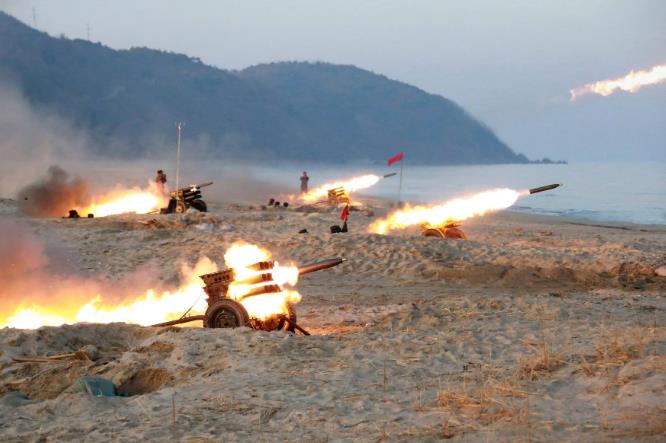North Korea Fires First Shot, South Korea Takes the Blow! Dark Clouds Over Northeast Asia, With the US as the Puppeteer
North Korea has fired upon South Korea. In 2024, the first shot in Northeast Asia was fired by North Korea. The question arises: why would North Korea dare to attack South Korea? In terms of national strength, North Korea is inferior to South Korea, which is backed by the United States, with nearly 700,000 US-South Korean joint forces deployed locally. As the weaker party, North Korea should be avoiding and cautious about conflict. Why isn’t North Korea afraid of the US-South Korean alliance? Following a terror attack in Iran resulting in over 300 dead and injured, Ayatollah Khamenei urged Iranians to restrain from attacking US forces and declaring war on America. So, what emboldens North Korea to boldly engage the US-South Korean forces?

North Korea practices a “military-first” policy, prioritizing military needs over economic development. With a total force of 1.35 million, ranking fifth globally, the North Korean army includes 950,000 in the army, 100,000 in the air force, and 50,000 in the navy. Among these, 200,000 are special forces, the largest in the world.
North Korea dedicates a significant portion of its GDP to military spending, about 24%, the highest globally. Its army inherits the Soviet artillery system, with over 20,000 artillery pieces, boasting the world’s largest artillery force. This includes over 8,000 heavy guns and 5,500 multiple rocket launchers. Russia imports shells from North Korea, mainly because North Korea’s artillery technology is derived from the Soviet Union. North Korea maintains over a million artillery shells in its stockpile and has a robust ammunition industry compatible with Russian artillery.
North Korea’s army, with over 5,000 tanks, ranks second globally, just behind Russia, with over 2,500 armored vehicles. However, the quality of North Korean tanks, primarily Soviet T-62 and T-72 models, is not up to par. After the Soviet Union’s collapse, North Korea developed its “Chollima” and “Songun” series of tanks based on these models.
Limited by its electronic technology, North Korean tank performance falls short compared to South Korea’s K-2 tanks. In an era dominated by unmanned aerial vehicles (UAVs) and artillery, ground combat is primarily controlled by these units, rendering tanks and armored vehicles vulnerable. Coincidentally, North Korea has advanced artillery and UAV industries.
North Korea’s air and naval forces are relatively weak compared to South Korea. South Korea can manufacture its Aegis destroyers and Dokdo-class amphibious assault ships, while North Korea lacks significant warships, relying on patrol boats and small submarines for coastal defense. In contrast, the South Korean Air Force is much stronger, with 60 F-35 stealth fighters, 60 F-15s, and 130 F-16s, far outmatching North Korea’s outdated fleet.
North Korea’s strategic missile force is its real trump card, with missile technology surpassing the UK and France, ranking fourth globally. North Korea’s Hwasong-17 ICBM has a range exceeding 15,000 kilometers, a capability South Korea cannot match.
North Korea focuses on practical military advancements such as artillery, UAVs, and missiles, gaining strategic control in the Korean Peninsula. Though economically and technologically inferior to South Korea, North Korea’s independent sovereignty and military autonomy give it an edge. In contrast, South Korea, dependent on US technology and lacking wartime command, remains passive and hesitant.
National spirit, not just GDP, determines a country’s military strength. In the Middle East, wealthy nations like Saudi Arabia, Qatar, and the UAE stand back in the Israel-Palestine conflict, while Iran and the Houthi rebels step forward. South Korea’s national spirit pales in comparison to North Korea’s independence and bravery.